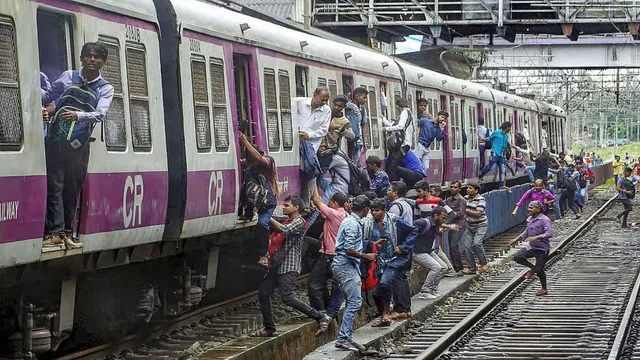PM Modi hoisted the tricolour on the world’s highest railway bridge—Chenab Bridge—on June 6, sending a strong message to Pakistan and China. Learn why this date and project are strategically important.
Chenab Bridge Inaugurated: A Historic Milestone
Katra, Jammu & Kashmir: On June 6, 2025, Prime Minister Narendra Modi inaugurated the Chenab Railway Bridge, the world’s highest railway arch bridge, and hoisted the Indian tricolour, marking a historic moment for India’s infrastructure and strategic presence in Jammu & Kashmir. The bridge, which stands 359 meters above the riverbed, is taller than the Eiffel Tower and is a modern engineering marvel.
This event is not just about rail connectivity—it carries a powerful political and strategic message, especially to Pakistan and China.
Why June 6 Is Significant
PM Modi’s decision to inaugurate the bridge on June 6 was intentional. It marks one month since “Operation Sindoor”, in which India destroyed terrorist hideouts in Pakistan-occupied areas. As per Kashmir affairs expert Dr. Ajay Chrungoo, the date symbolizes India’s firm stand against cross-border terrorism and its unwavering resolve to protect national interests.
Strategic Significance of Chenab Bridge
The Chenab Bridge, part of the Udhampur-Srinagar-Baramulla rail link, is more than just an engineering wonder:
-
Connects Kashmir to the rest of India via rail for the first time.
-
Built over the Chenab River, which is under the Indus Water Treaty—a treaty India is now reviewing.
-
Ensures the easy movement of security forces and equipment to remote areas close to the LoC and Ladakh, strengthening India’s military logistics.
-
Sends a clear message to Pakistan, whose separatist proxies like Pasban-e-Hurriyat protested PM Modi’s visit.
-
Acts as a challenge to China’s regional dominance in infrastructure development.
Engineering Marvel: A Symbol of New India
The Chenab Bridge stretches 1,315 meters and is made of over 30,000 metric tons of steel. Designed to withstand wind speeds of 260 km/h and major earthquakes, this bridge is a testament to Indian engineering excellence. It is accompanied by the newly built Anji Khad cable-stayed bridge, another symbol of innovation.
PM Modi described the bridge as a “symbol of India’s resilience and ambition.” In a post on social media, he wrote, “The tricolour is flying proudly on the Chenab Rail Bridge! A symbol of national pride and infrastructure excellence.”
Blow to Separatism and Boost to Integration
Experts say that the bridge is not just about transportation but also about national integration. With uninterrupted rail connectivity, the people of Kashmir will benefit from better development, tourism, and employment.
Social activist Salim Reshi stated that such infrastructure will help youth stay away from radical ideologies and counter Pakistan’s propaganda. It strengthens Kashmir’s integration with India and limits the operational space for terrorism and separatist groups.
Future Plans: Railway to Ladakh via Kargil
The completion of the Chenab Bridge paves the way for future railway expansion to Leh via Kargil, enhancing strategic and civilian connectivity to Ladakh. Simultaneously, work is ongoing on another route to Ladakh from Himachal Pradesh, signaling India’s long-term strategy to secure its borders and improve accessibility in difficult terrains.
Conclusion: A Message Beyond the Border
By hoisting the tricolour on the Chenab Bridge, PM Modi didn’t just open a railway line—he delivered a clear message to Pakistan and China. This moment reflects India’s strength, unity, and growing global stature in building infrastructure in the most difficult environments.
Pakistan’s silence and China’s unease are evidence enough: India has raised the bar, and its flag is not just flying high—it’s flying stronger than ever.



